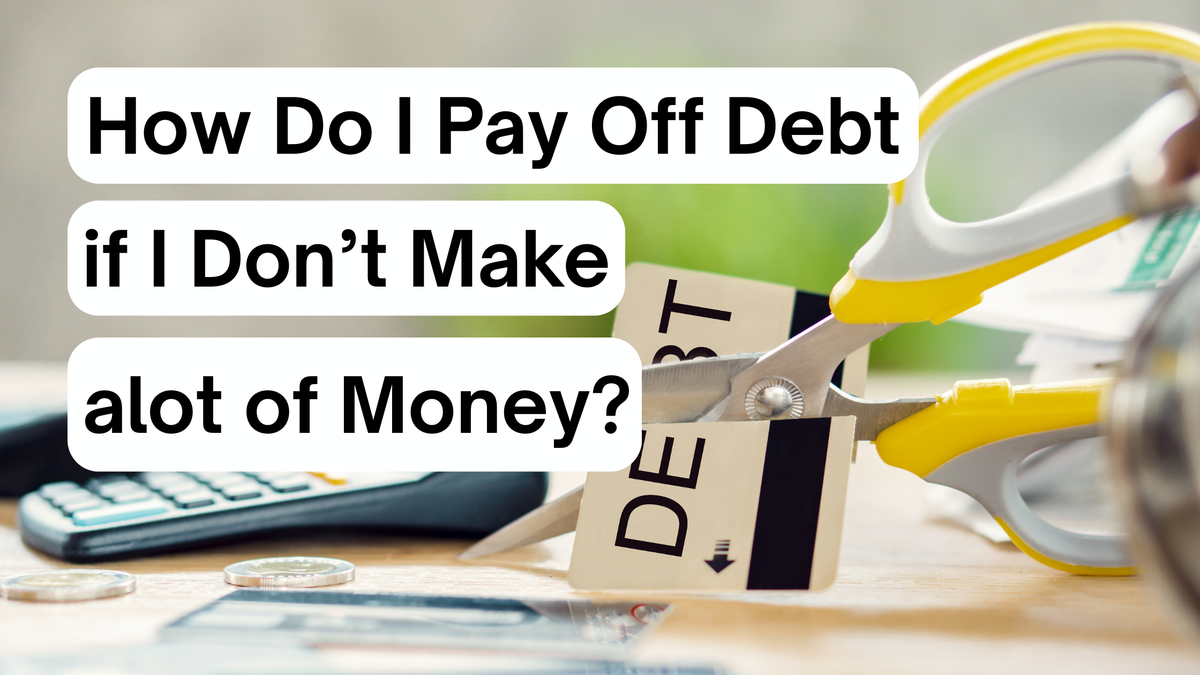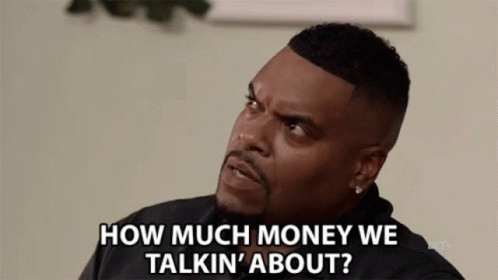How Do I Pay Off Debt If I Don’t Make a Lot of Money?
Paying off debt on a tight income feels impossible—but it’s not. This blog shares realistic, judgment-free strategies that help you gain traction even when money’s tight. Get tips, mindset shifts, and resources to start where you are and finally move forward.

Let’s skip the generic advice and talk about what it’s really like to try to pay off debt when your income barely covers the basics.
Groceries are high. Gas is ridiculous (at least in California). Rent keeps climbing. And then the credit card bill shows up… again.
It feels like there’s no breathing room, let alone extra money to throw at debt. But that doesn’t mean you’re stuck. It just means your strategy has to work differently.
Here’s how to start making progress—even when it feels like you don’t make enough to move the needle.
Step 1: Know What You Owe—And Who You Owe It To
I know it sounds basic, but a lot of people don’t know the full picture of their debt. Not because they’re lazy or irresponsible—but because looking at the numbers feels overwhelming.
But here’s the truth: You can’t make a plan if you’re avoiding the facts.
Take 30 minutes. Write down:
- Each debt you owe (credit cards, loans, etc.)
- Interest rates
- Minimum payments
- Due dates
This will help you decide where to focus first. And it might even take some weight off—because clarity often does.

Step 2: Pick a Payoff Method That Works for You
There’s no one-size-fits-all here, but these two main strategies are the most popular:
The Snowball Method
- Pay off your smallest balance first, while making minimums on everything else.
- When that’s gone, roll that payment into the next-smallest debt.
Why it works: Momentum. You feel a win early on, which keeps you going.
The Avalanche Method
- Focus on the debt with the highest interest rate first.
- This saves more money over time.
Why it works: It's mathematically efficient, even if the wins feel slower.
👉 The right method is the one you’ll actually stick with. Progress is progress—pick a plan and keep moving.
Step 3: Create Breathing Room with a Bare-Bones Budget
You don’t need to track every penny forever—but you do need to find a few dollars to put toward your debt consistently.
Try a bare-bones budget just for the next 30 days.
This doesn’t mean cutting out everything joyful. It means asking:
- What can I pause just for now?
- What subscriptions can I cancel temporarily?
- Can I swap one meal out for a meal in?
Even $50/month matters. That’s $600/year toward your debt.
Step 4: Use Cash Envelopes or Digital Categories
This might sound old-school, but it works.
Put your spending money into envelopes (or digital “buckets” using a budgeting app) for things like groceries, gas, or fun money.
When the money’s gone, it’s gone.
This helps avoid accidental overspending that could’ve gone to your debt.
📦 My FREE Financial Planner Bundle (a $47.00 value!) includes printable trackers for debt payoff, budgeting, saving, and more—especially helpful if digital apps overwhelm you.
Step 5: Eliminate "Stealth" Spending
That $7 here, $9 there? It adds up fast.
Review your last two bank statements and highlight anything that’s:
- Unused (subscriptions, memberships)
- Impulse-driven (fast food, delivery apps)
- Easily swappable (premium brand groceries → store brand)
Shifting even $30/month to debt is a win.

Step 6: Think About Earning-Not Just Cutting
There’s only so much you can cut. Sometimes, the only way to speed up debt payoff is to bring in more income.
But if you’re already stretched thin, it has to be flexible and low-barrier.
A few practical options:
✅ Try Affiliate Marketing
Affiliate marketing lets you earn a commission for products or services you already love and share. It’s not instant money—but it can become a consistent stream of extra cash.
📌 I personally recommend:
- SendIt – a paid mail-in sweepstakes service that also has an affiliate program.
- Kim Ward’s Pinterest Marketing Academy – Learn how to turn Pinterest into a traffic machine for affiliate income. She breaks it down in a way that’s beginner-friendly, not overwhelming.
You don’t need a blog or a big audience to start. Just consistency and a willingness to learn.
Step 7: Get Clear On Your Financial Goals
If your only goal is “get out of debt,” you’re going to lose motivation fast.
Try these instead:
- “I want to pay off my credit card so I can stop paying interest every month.”
- “I want to be free to leave a toxic job without panicking about money.”
- “I want to build an emergency fund so I don’t go back into debt next time life hits hard.”
Those are goals you can connect with. And that connection makes the hard days worth it.
Need help figuring yours out? Download my 7 Money Rules Guide. It’s free and will help you start thinking about your money in a more empowering way—without needing a finance degree.

What About Support?
You don’t have to figure this all out on your own.
I offer a free 15-minute intro strategy call with my gal, Joy. Here’s what it’s for:
- We learn where you are in your financial journey
- You share what your biggest goals or struggles are
- We see if we’re a good fit to help you move forward
Book your free call with us here.
You Can Pay Off Debt—Even Without a Big Paycheck
This is not about perfection. It’s about momentum.
- Make a list of what you owe.
- Pick one method that works for your brain.
- Start with whatever you can afford.
- Use tools that keep you accountable.
- Explore income that fits your life—not someone else’s hustle.
Every little step counts.
Give Yourself a Starting Line—Not a Finish Line
Debt payoff isn’t a one-time sprint. It’s a process, and every payment—no matter how small—is progress. Don’t wait to feel “ready” or for life to slow down. Start messy. Start imperfect. But start. Your future self will thank you for it.
📌 Download the 7 Money Rules Free Guide
📌 Grab my FREE Financial Planner Bundle (a $47.00 value!)
📌 Learn more about SendIt
📌 Check out Kim Ward’s Pinterest Marketing Academy
📌 Book Your Free 15-Minute Intro Strategy Call
Affiliate Disclaimer
This blog may contain affiliate links, which means I may earn a small commission if you click on a link and make a purchase—at no extra cost to you. As an affiliate, I only recommend products that I personally use, trust, and believe will add value to my readers. Your support helps keep this content free and allows me to continue sharing helpful tips and resources.
I am not a medical professional, and the information provided on this blog is for educational and informational purposes only. Always consult with a qualified healthcare provider before making any changes to your skincare or wellness routine.